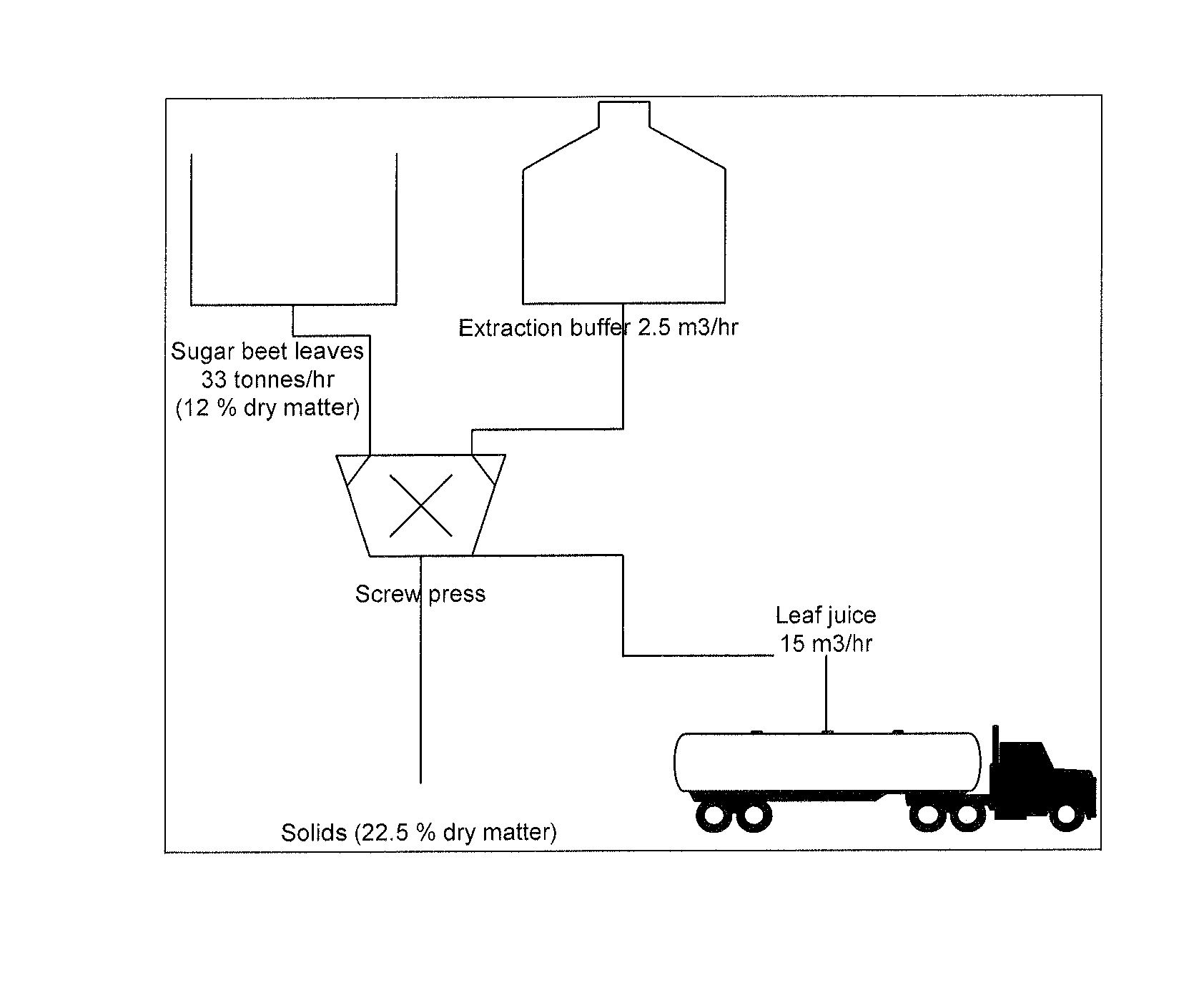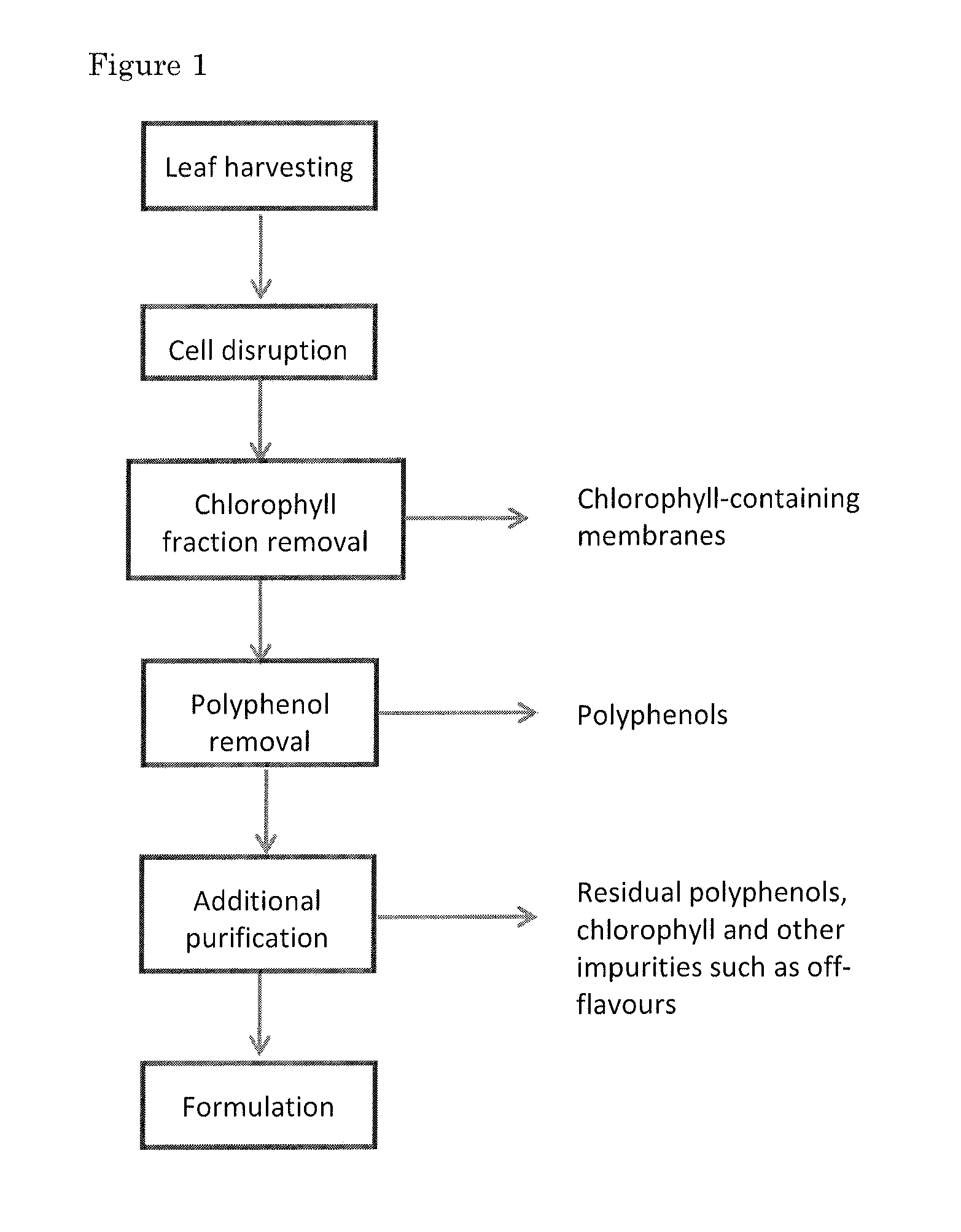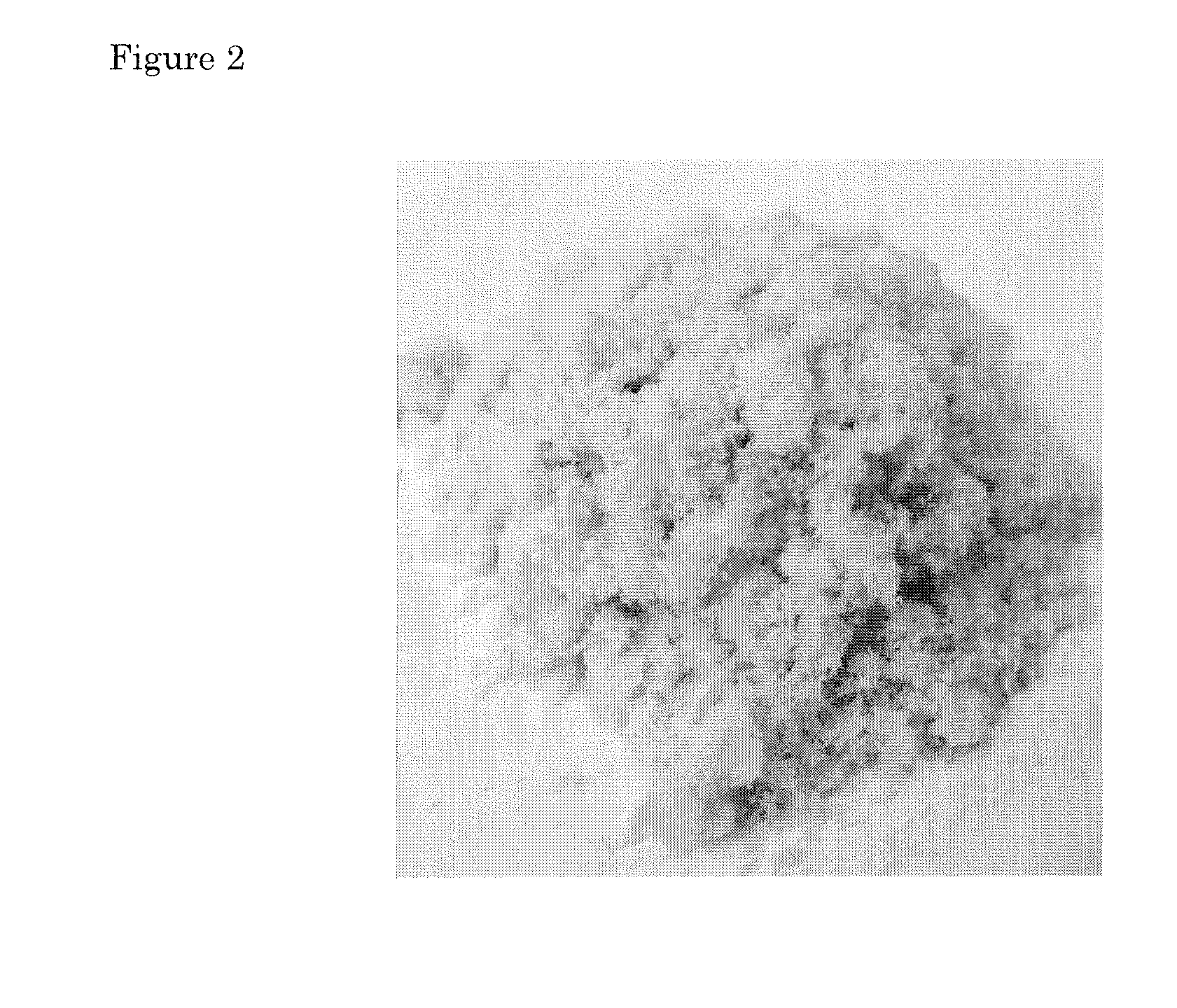Economical process for the isolation of functional protein from plants
a functional protein and economic technology, applied in chemical/physical processes, enzymes, food extrusion, etc., can solve the problem that plant-purified proteins cannot be produced free of polyphenols, and achieve the effect of low cost and high marketable valu
- Summary
- Abstract
- Description
- Claims
- Application Information
AI Technical Summary
Benefits of technology
Problems solved by technology
Method used
Image
Examples
example 1
Isolation of Rubisco on Industrial Scale
[0153]In this experiment, a method for obtaining Rubisco from sugar beet leaves in industrial scale is illustrated. The complete process is illustrated in FIG. 1.
[0154]About 100 m2 sugar beet leaves are collected mechanically from a test farm. Harvesting of stems is avoided. The leaves are disrupted and pressed at a screw press, resulting in solids separation from the leaf juice. The juice is transported to the pilot facility at TNO in Zeist for further purification. The process is summarized in Table 2.
[0155]An amount of 3.000 kg of sugar beet leave juice is collected. Impurities such as brown leaves and occasional stems are removed. 100 litres extraction buffer is added to the leaf juice, containing 30% Sodium Metabisulfite at a pH of 6.0.
[0156]Subsequently, heat-induced thylakoid membrane precipitation is performed by using two heat exchangers, one for heating and one for cooling the juice. The juice was rapidly heated to 50° C. in the firs...
example 2
Spectrophotometer and Superdex 200 Analysis of the Performance of Amberlite XAD16 Packed Column on Removal of Polyphenols
[0161]Samples with a volume of 200 μl were analyzed on a size-exclusion chromatography column (Superdex 200) with a buffer containing 25 mM Tris / HCL 200 mM NaCl @ pH 8. Larger components elute faster and were detected more to the left of the chromatogram. Samples were diluted at a 1:1 ratio (v / v) with a 50 mM Tris / HCl 400 mM NaCl pH 8 buffer and filtrated (0.45 μm) before analysis on the Superdex 200. The sample volume was 200 μl for all samples. Samples were stored at 6° C. before analysis.
[0162]The sample “Juice after homogenization” was first centrifuged (13,500 rpm, 5 min, no temperature regulation) before it was diluted and filtrated. This sample was obtained from freshly-harvested sugar beet leaf juice.
[0163]Peaks were identified in FIGS. 5A-E. The first of the relevant peaks was at 7.4-7.9 ml, identified as large material (LM), probably thylakoid membrane p...
PUM
| Property | Measurement | Unit |
|---|---|---|
| Temperature | aaaaa | aaaaa |
| Temperature | aaaaa | aaaaa |
| Temperature | aaaaa | aaaaa |
Abstract
Description
Claims
Application Information
 Login to View More
Login to View More - R&D
- Intellectual Property
- Life Sciences
- Materials
- Tech Scout
- Unparalleled Data Quality
- Higher Quality Content
- 60% Fewer Hallucinations
Browse by: Latest US Patents, China's latest patents, Technical Efficacy Thesaurus, Application Domain, Technology Topic, Popular Technical Reports.
© 2025 PatSnap. All rights reserved.Legal|Privacy policy|Modern Slavery Act Transparency Statement|Sitemap|About US| Contact US: help@patsnap.com



